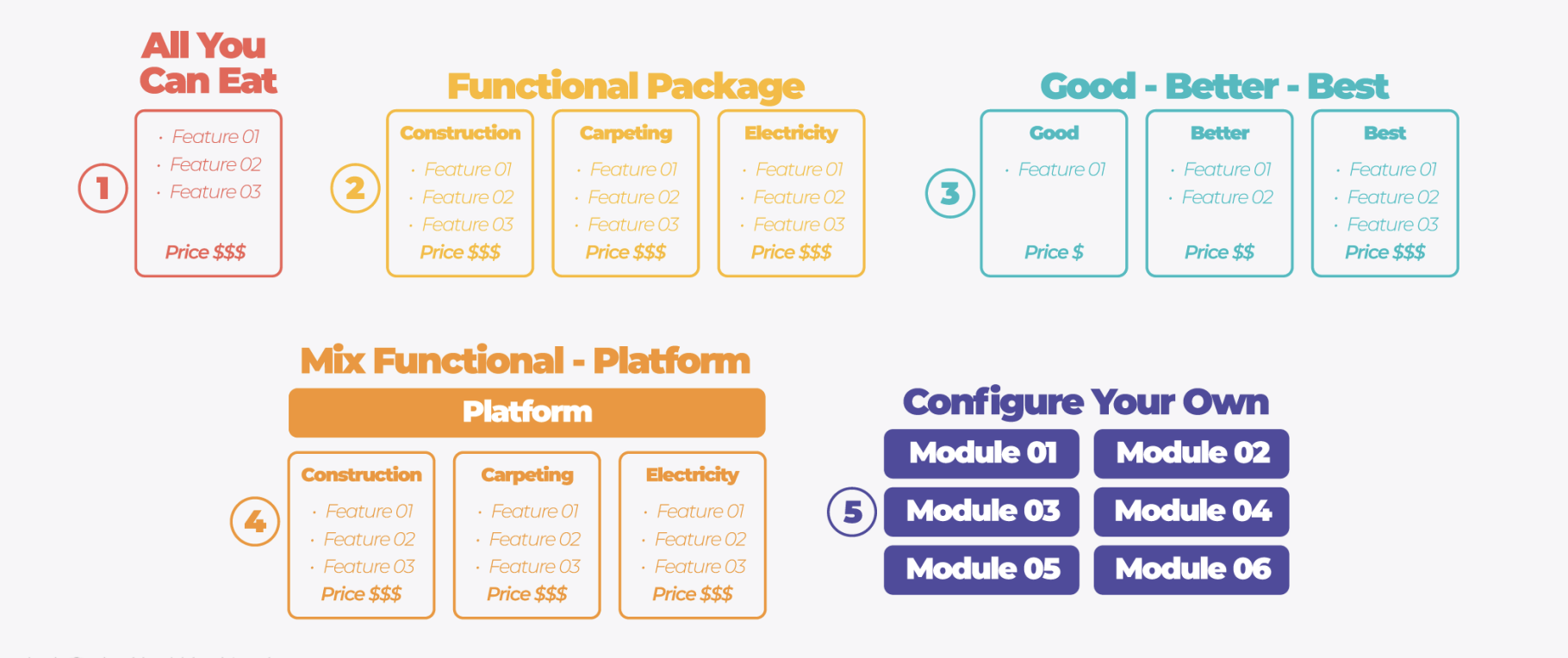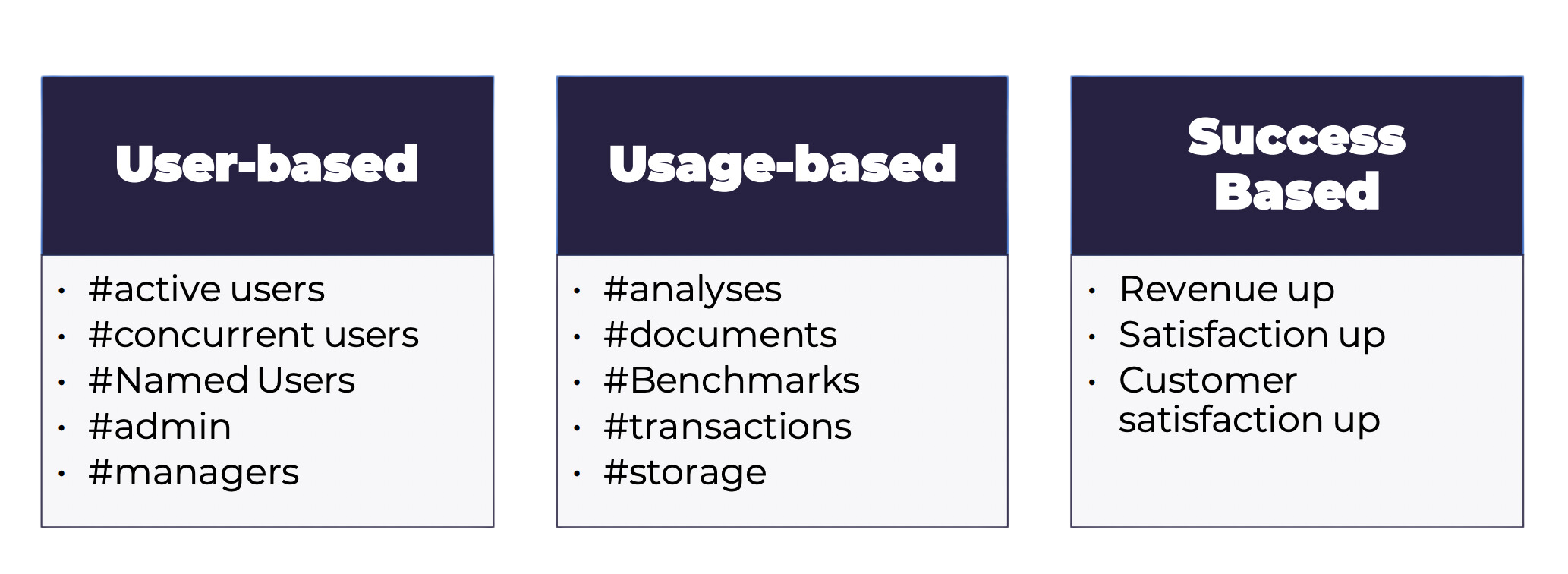Revolutionizing B2B SaaS: Mastering Usage-Based Pricing Strategies
Master B2B SaaS usage-based pricing with insights from Wolter Rebergen, VP of RevOps at Younium. Elevate your pricing strategy and stay ahead in the market

Jump to read
Optimizing Pricing and Packaging
Segmentation
Common Pricing Models
Pricing Metrics: User-Based, Usage-Based, and Sucess-Based
Key Considerations for Usage-Based Pricing
Commission Structures in Transition
Simplifying Pricing Pages
Co-Termination of Deals and Tier-Based Usage Charges
Integration of Usage Data in Billing
In the dynamic world of B2B SaaS, a transformative shift is underway, and it goes by the name of usage-based pricing. Despite its potential to reshape the industry, discussions on this innovative pricing model have been surprisingly scarce. With more than half of SaaS companies eyeing the adoption of usage-based pricing in the coming year, it's high time we delve into this rapidly growing trend. Join us on a journey through the insights shared by Wolter Rebergen, VP of RevOps at Younium, in our recent webinar, as we unravel the nuances of mastering usage-based pricing and its strategies for B2B SaaS success.
Optimizing Pricing and Packaging: A Strategic Imperative
Wolter Rebergen underscores the critical importance of optimizing pricing and packaging, especially in challenging economic conditions. "The right pricing not only sets you apart from the competition but also facilitates better upsell models, longer customer retention, and numerous other benefits," he remarks.
Segmentation: The Foundation for Effective Pricing
The linchpin of a successful pricing strategy is segmentation, as emphasized by Wolter. Understanding the commonalities and differences among your prospect base and ideal customer profile is pivotal. "Startups and enterprise companies have vastly different needs and pricing requirements. Without this understanding, you risk encountering difficult discussions."
Even within a narrow Ideal Customer Profile (ICP), segmentation proves vital. Wolter stresses, "Segmentation helps you recognize these differences and capitalize on them."
Common Pricing Models: A Spectrum of Options
In the diverse landscape of B2B SaaS, various pricing models significantly impact customer relationships and revenue strategies. Let's examine the spectrum of common pricing models prevalent in the industry:
- All-You-Can-Eat Model: This straightforward approach simplifies pricing by offering a solution with a single price encompassing all features. It eliminates complexities but requires careful consideration to align with diverse customer needs.
- Functional Packages: Customizing a core product to cater to specific industries or segments provides a targeted solution for diverse customer needs. This model allows businesses to tailor their offerings, enhancing the product's relevance for different user groups.
- Good, Better, Best (Starter, Professional, Enterprise) Model: This tiered model offers scalability and flexibility. It allows customers to choose a plan that aligns with their current requirements while providing room for growth. This model accommodates the evolving needs of your customers.
- Mixed Functional and Platform Model: Combining a base fee for the core product with additional niche versions as add-ons offers a nuanced approach. This model allows for customization, catering to specific industry demands while maintaining a stable foundation.
- Configure Your Own Model: Empowering customers to tailor packages by selecting specific modules adds a layer of personalization. This flexible model enhances customer satisfaction by meeting individual business needs.

Pricing Metrics: User-Based, Usage-Based, and Success-Based
The choice of pricing metric significantly influences how customers interact with your SaaS offering. Let's unravel the intricacies of three prevalent pricing metrics:
- User-Based Pricing: Tying costs to the number of users, often with a flat or platform fee, impacts accessibility and scalability. This metric can be leveraged to accommodate different user needs and foster a user-friendly environment.
- Usage-Based Pricing: This metric ties costs to specific actions or quantities, often linked to customer success. Aligning pricing with actual usage provides transparency and ensures that customers pay for the value they derive from your solution.
- Success-Based Pricing: Linking pricing to the success customers achieve using the solution creates a mutually beneficial relationship. This metric fosters a partnership dynamic, aligning your success with your customers.

Key Considerations for Usage-Based Pricing: Navigating the Terrain
As the spotlight shifts to usage-based pricing, it's crucial to navigate the terrain with careful consideration of various factors. Here are key considerations for successful implementation:
- Tracking Usage: Beyond establishing the pricing structure, effective tracking systems are essential. Robust usage tracking contributes to informed decision-making and customer satisfaction.
- Migrating Existing Customers: Plan and communicate price changes carefully when transitioning to usage-based pricing. Specific tips ensure a smooth and transparent migration process to maintain positive customer relationships.
- Linking Usage to Value: Guarantee that customers perceive a direct link between usage and value. Strategies to communicate the tangible benefits of your solution reinforce the value proposition for users.
- Revenue Impact: Understand the short-term and long-term impact of usage-based pricing on revenue. Considerations for mitigating potential risks and optimizing revenue streams are crucial.
- Competitive Analysis: Analyze competitors' pricing strategies for differentiation and strategic positioning. Well-informed competitive analysis shapes your pricing strategy and market positioning.
- Commission Structure for Sales: Align sales commissions with actual usage and value derived. This approach motivates sales teams and ensures a cohesive strategy across your organization.
- Back Office Capabilities: Assess back office efficiency in handling usage-based invoicing. Streamlined processes are vital for accurate billing and customer satisfaction.
- Predictability and Revenue Metrics: Utilize metrics to forecast and understand revenue trends. Data-driven insights contribute to predictability, enabling better strategic planning and decision-making.
- Historic Data for Forecasting: Leverage historic data to identify usage trends and patterns. Historical insights inform forecasting, providing a foundation for proactive decision-making.
Commission Structures in Transition: Navigating Change
Discussing commission structures in the transition to usage-based pricing, Wolter shares insights on starting point and kickback approaches. "This delayed and heightened reward structure is commonly observed and recommended," he said. The approach aligns with the goal of ensuring the usage component ultimately accounts for 150% of what it would have been as part of the recurring fee.
Simplifying Pricing Pages: Clarity Amidst Complexity
Addressing the complexity of pricing structures, it is advised to distill options into two transparent models, simplifying the visitor's experience. The importance of balancing transparency and complexity is highlighted, considering the specifics of each business.
Co-Termination of Deals and Tier-Based Usage Charges: Enhancing Efficiency
Recommendations include co-terming deals with existing clients for efficient business reviews. Regarding tier-based usage charges, businesses are encouraged to provide specific details to receive informed responses.
Integration of Usage Data in Billing: Seamless Processes
As we delve into the intricacies of usage-based pricing, a crucial aspect that emerged during our discussions involves the seamless integration of usage data into billing processes. Our emphasis on transparency and efficiency led us to support various methods for entering usage data, including API endpoints.
In conclusion, mastering usage-based pricing involves careful consideration of various factors. Younium, the subscription management hub stands ready to assist businesses in navigating the intricacies of pricing and packaging for their unique needs. If you want to talk to us or learn more about how Younium handles usage-based pricing, request a demo. As the SaaS landscape continues to evolve, staying ahead with strategic pricing approaches is key to sustained success.